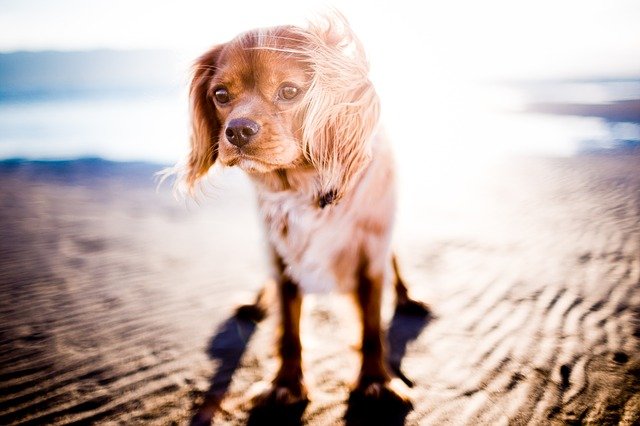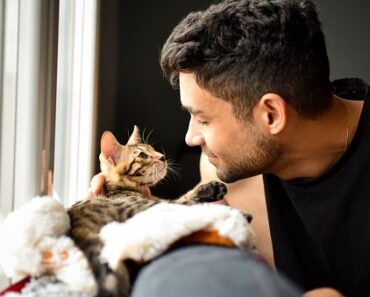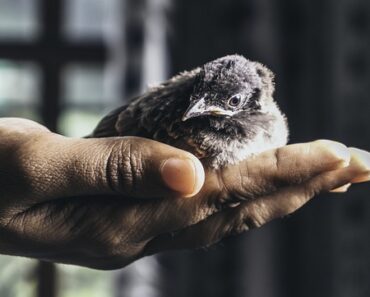
There are easy tips to put in place to fight the heat and spend a pleasant and serene summer. In the event of a problem it is useful to know the right gestures to have. Heat-related accidents are generally linked to a lack of knowledge about the sensitivity of animals to heat. Once this misunderstanding is removed, it will be easy for you to have the right reflexes and to be vigilant. We will help you through this article to best prepare for the summer season to protect your pets.
The dangers of summer for our animals
A hot day can quickly cause heat stroke to your pet. The best place to do this is in the car. In the summer, even if you park your car in the shade, the vehicle quickly becomes a furnace. Never let your dog or cat wait in the car, even for a short time. Arrange to take him or her with you when you get out of the car, if this is not possible leave him or her at home in a cool place.
On the road turn on the air conditioning or open the windows while driving, this will quickly cool the vehicle. Similarly, when you get into your car, remember to air it out before getting your pet in. It is very easy to take a bottle of water and a container with you so that the animal can hydrate itself. Never leave an animal in a car in the sun or in high temperatures. Even with the window open, it is too dangerous for him.
There are waterproof cloth bowls that take up little space and are easy to take everywhere. As soon as your dog starts panting loudly, you should offer him a drink and put water on his ears and snout. When playing outdoors with your dog, be careful not to overexert him. Especially if your dog is obese or has a weak heart. Quiet water games or short moments if the effort puts a strain on the heartbeat are the right dosage for your play sessions.
If you enjoy sunbathing, you should know that your pet is just as much at risk of sunburn as you are and that it is very dangerous for him. On the beach you must provide an umbrella and a water bowl for your dog and at home you must either encourage the animal to go into the shade or prevent it from going out between 11 am and 4 pm. Small animals will be kept in the shade and protected from draughts, with fresh water available. For dogs and cats, keeping them in a delimited space is often more difficult. White dogs and cats, for example, have a high risk of developing cancer as a result of sunburn on the ears or nose. But this risk concerns all animals with different measurements, a bit like humans depending on their skin tone. An animal with a dark coat will get hot very quickly, it is more at risk of heat stroke than sunburn. There are sun creams for dogs and cats but they often cause the animal to lick the product and will therefore have to be renewed many times. Your vigilance will be much more effective than a sun cream, the latter being useful for the most fragile animals and exceptional situations.
Fighting against heat on a daily basis
For your comfort and that of your pets, try to keep your home as cool as possible. To do this, air your home early in the morning and late in the evening after sunset. During the day, keep your shutters closed to keep your home cool. Every day change the water in your pets’ bowls so that they always have fresh water available.
Regularly check that the water bowls do not empty during the day, the animal should never run out. Take water and a container with you when you leave with your pet and look for green areas, swimming spots and forests for your walks. There are refreshing carpets for dogs and cats, you can take them with you on car trips or to provide a cool sleeping area at home. It is a very useful accessory when you have to make a long trip with your pet in very hot weather, during your vacations for example. You can also moisten a towel with cold water and put it on your dog for a few minutes. A little bit of cool water on the muzzle, ears and paws will do the most good when you observe that the animal starts to get too hot. Animals that only eat dry food such as kibble will appreciate a small ration of food when it’s hot. You will provide extra hydration through the feed which can only be beneficial to the animal. If you see your pet sleeping in the sun, encourage it to move to a shaded area. The ideal is a shady spot of vegetation that will bring him freshness.
In case of sunstroke, what should I do?
Your dog’s normal temperature is about 38.5°. If you suspect sunstroke you can take the temperature of the animal, if it is at 42° and beyond the animal is in imminent danger of death.
Other signs may alert you. The dog will breathe heavily and stick out its tongue. In this way he tries to regulate his temperature. Dogs do not sweat, in case of severe heat stroke it is not uncommon for a dog to fall into a coma. If he is a victim of severe heatstroke he will start to drool with a foamy drool and you can observe that the mucous membranes change from a dark red to a worrying blue color. These signs must be considered immediately and you must react quickly because the animal is then in danger of death. To do this, try to encourage your pet to drink and put a wet towel on its body. Then call the veterinarian as soon as possible to come to your home, or take the animal quickly to his office. If the veterinarian is on the road, you can begin treatment while you wait. Immerse the dog in a cool water bath and keep him as calm and relaxed as possible while waiting for the arrival of the carer. Ventilate the room where you are. If you have to take the dog to the vet yourself, refresh the dog as best you can during the entire trip. In the case of an animal that is staggering or losing consciousness, do not take the time to call or perform first aid. The animal is on the verge of a coma. Go to the veterinarian as soon as possible and, as before, refresh the animal as much as possible during the trip.
If you respect the advice we have given you, you will never have to react to an emergency situation related to your pet’s sunstroke. It is a matter of your common sense and your attention to your pet. It is quite simple to prevent the worst by respecting a few good gestures and by remaining vigilant in risky situations. During periods of heat wave, it is necessary to reinforce even more the fight against heat. The most fragile animals will require even more attention. This fight must become a benevolent habit towards your animal throughout the summer to ensure its well-being and good health.






